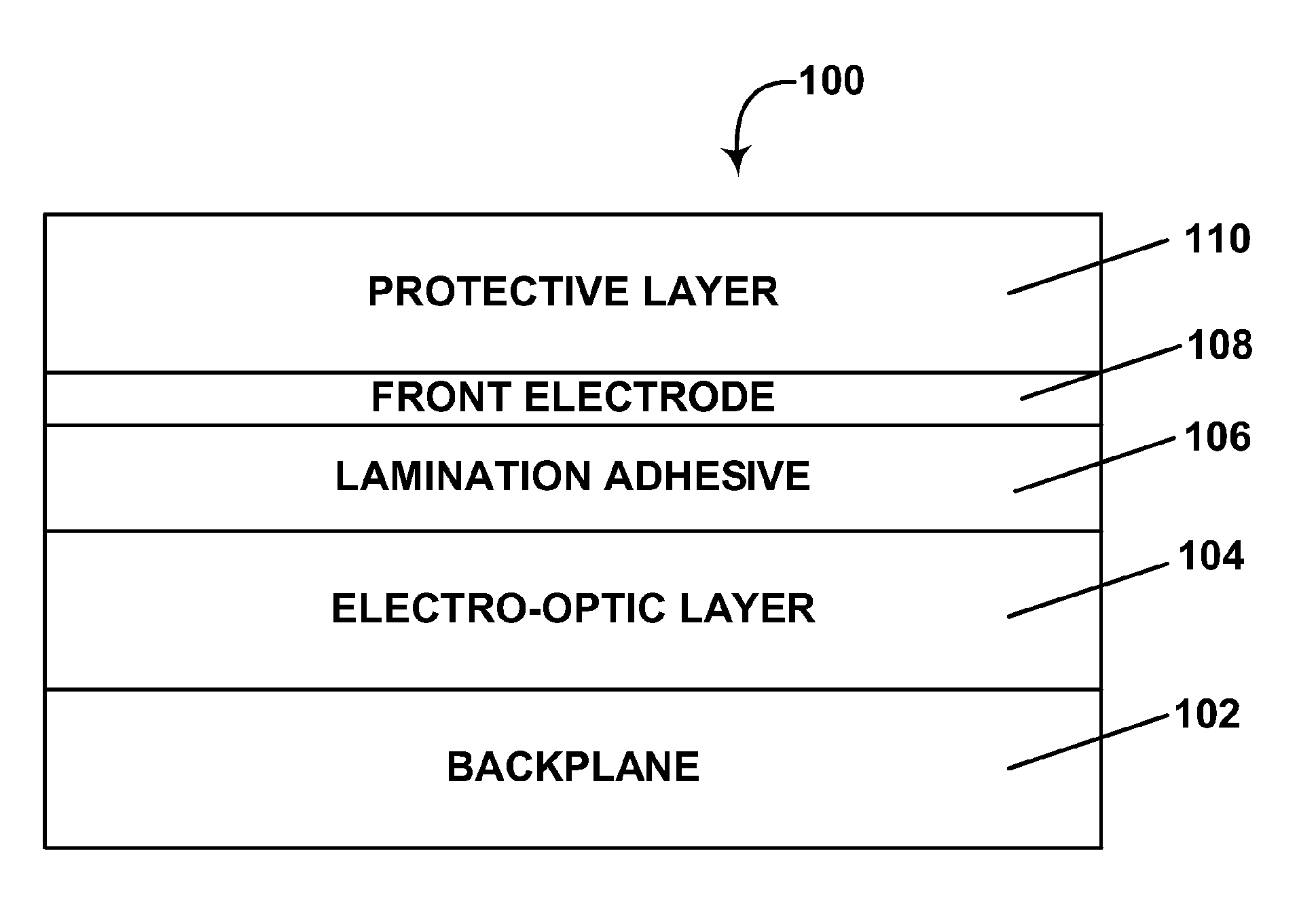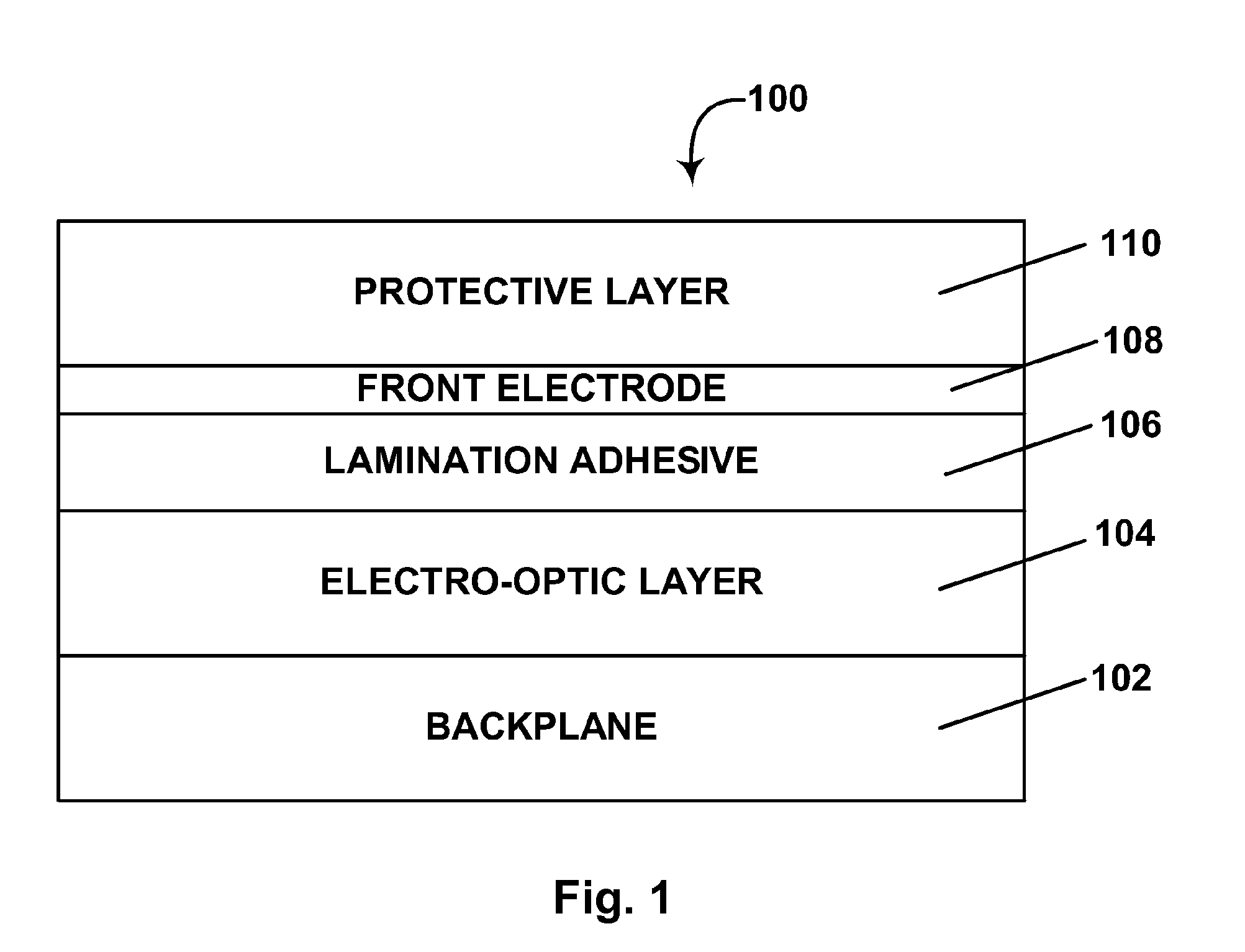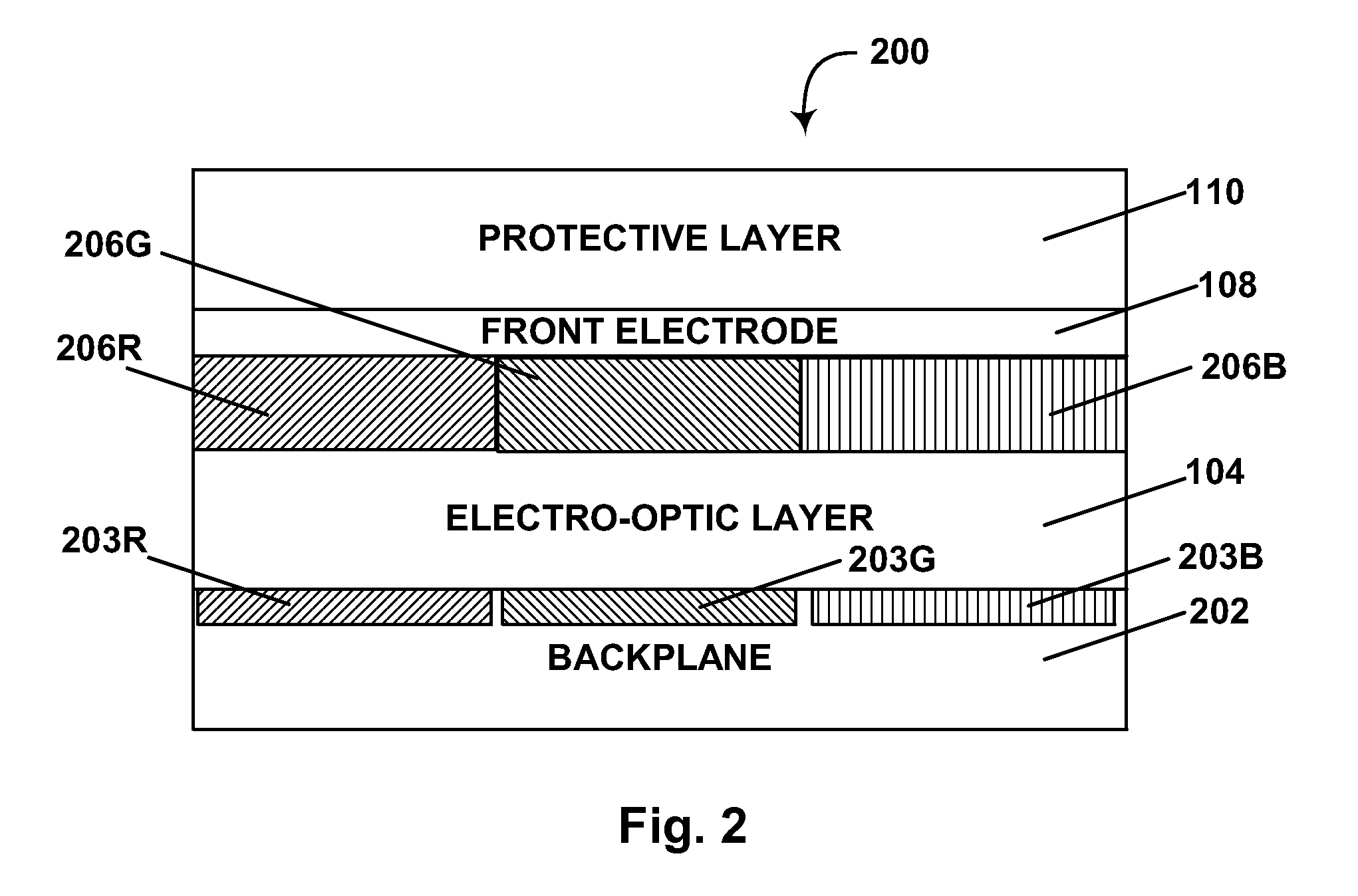Components and methods for use in electro-optic displays
a technology of electrooptic displays and components, applied in the direction of optics, instruments, optical elements, etc., can solve the problems of inadequate service life of these displays, unable to meet the needs of users, and gas-based electrophoretic media are susceptible to the same types of problems, so as to achieve convenient and flexible color filter arrays
- Summary
- Abstract
- Description
- Claims
- Application Information
AI Technical Summary
Benefits of technology
Problems solved by technology
Method used
Image
Examples
example 1
Production of Experimental Displays
[0089]A slurry containing electrophoretic capsules in a polymeric binder was prepared substantially as described in U.S. Patent Publication No. 2002 / 0180687, Paragraphs [0067] to [0074], except that Dow Corning Q2-521 “Super Wetting Agent” was added as a coating aid. The slurry was then bar-coated on to the aluminum-coated surface of an aluminized PET release sheet. In one procedure, a 20 μm layer of a lamination adhesive had previously been coated on to the same aluminized surface; this lamination adhesive was of the type described in U.S. Pat. No. 7,012,735, and was doped with 20,000 ppm of tetrabutylammonium hexafluorophosphate. In a second procedure, the same 20 μm layer of the same lamination adhesive was laminated to the ITO-covered surface of a PET / ITO release sheet, and the resultant sub-assembly laminated to the electrophoretic layer / release sheet subassembly, the adhesive layer being laminated to the electrophoretic layer.
[0090]The lamina...
example 2
Electro-Optic Tests
[0098]The experimental displays prepared in Example 1 above were driven between their extreme black and white optical states using ±15 V, 500 millisecond drive pulses and the reflectivities of the two extreme optical states measured. Testing was effected both at room temperature (20° C.) and at 0° C. FIG. 4 of the accompanying drawings shows the dynamic range (the difference between the extreme black and white states measured in L* units (where L* has the usual CIE definition:
L*=116(R / R0)1 / 3−16,
where R is the reflectance and R0 is a standard reflectance value). In each case, the left column shows the results obtained at 20° C., while the right column shows the results obtained at 0° C.
[0099]From FIG. 4 it will be seen that the control and the “inverted” structure of the present invention (the two pairs of columns at the left-hand side of FIG. 4, the inverted layer being inverted in the sense that the electrophoretic layer is inverted) show very similar results at ...
example 3
Resolution
[0101]The resolution of the control displays and those of the present invention was evaluated by microscopic examination of the displays formed on glass backplanes; FIG. 5 shows the differences that were observed. As indicated in FIG. 5, each of the displays used in these tests comprised two pixels separated by a 100 μm gap having no ITO layer and hence non-switching. The control display (conventional FPL structure) is shown on the left-hand side of FIG. 5 and the display of the present invention on the right-hand side. Each side of FIG. 5 is a composite of three separate micrographs of the relevant display. The upper section of FIG. 5 shows the display with the right pixel switched to its white extreme optical state, while the lower section of FIG. 5 shows the display with the right pixel switched to its black extreme optical state.
[0102]It can be seen from FIG. 5 that, in the control display, blooming caused switching across the entire width of the inter-pixel gap, i.e.,...
PUM
| Property | Measurement | Unit |
|---|---|---|
| thickness | aaaaa | aaaaa |
| particle size | aaaaa | aaaaa |
| temperatures | aaaaa | aaaaa |
Abstract
Description
Claims
Application Information
 Login to View More
Login to View More - R&D
- Intellectual Property
- Life Sciences
- Materials
- Tech Scout
- Unparalleled Data Quality
- Higher Quality Content
- 60% Fewer Hallucinations
Browse by: Latest US Patents, China's latest patents, Technical Efficacy Thesaurus, Application Domain, Technology Topic, Popular Technical Reports.
© 2025 PatSnap. All rights reserved.Legal|Privacy policy|Modern Slavery Act Transparency Statement|Sitemap|About US| Contact US: help@patsnap.com



